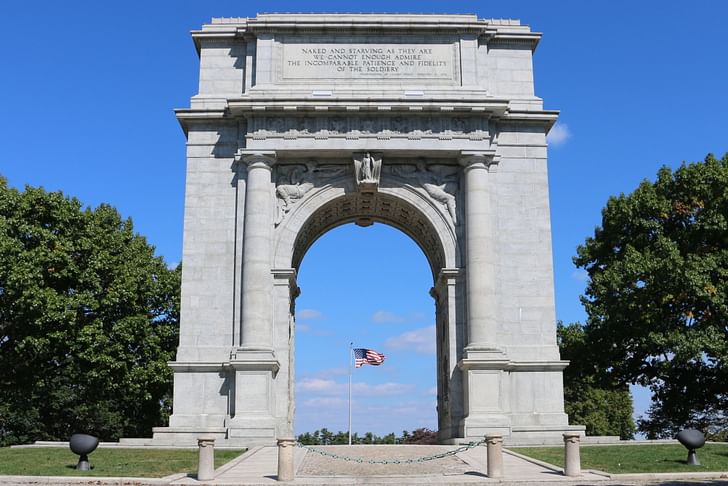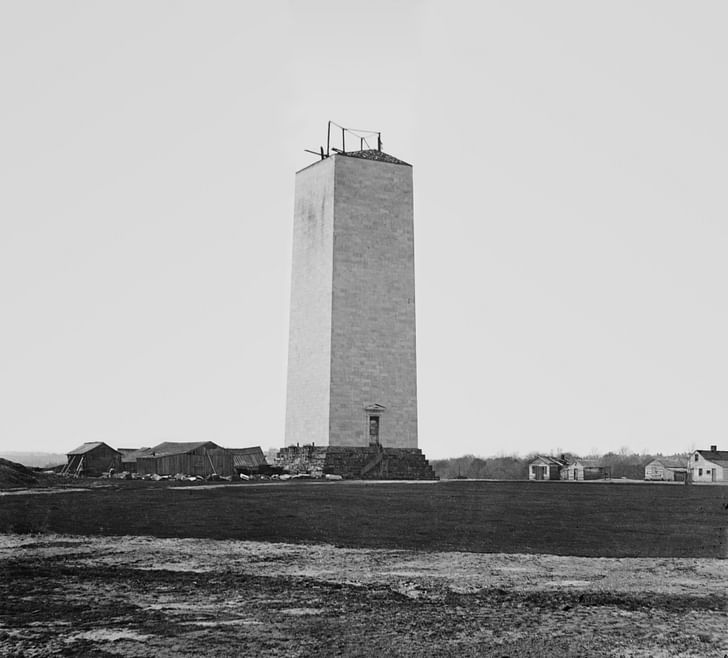

Architects have long created memorials to commemorate dead from wars and other mass casualty events. In America, these structures, from the Washington Memorial to lesser known monuments located across the country commemorating the Union victories of the Civil War, play an important role in shaping and projecting a certain vision of American history.
The French-American architect Paul Philippe Cret, active during the first five decades of the 20th century, is perhaps the most prolific American memorial designer. Here are a few of his creations.
It is thought that the roots of the Memorial Day holiday recognizing the injured and killed military personnel who served in the American armed forces goes back to a ceremony initiated in the aftermath of the Civil War by freed slaves and other residents of Charleston, South Carolina.
The inaugural ceremony, according to Yale University professor David Blight’s 2001 book Race and Reunion: The Civil War in American Memory, took place on May 1, 1865 at the site of a former racetrack where Confederate soldiers had imprisoned and killed many Union soldiers late in the war. The dead were buried, Blight reports, in neat rows and a tall white picket fence was erected around the grave sites with a commemorative wooden arch built at the entrance to this “Martyrs of the Racecourse” memorial, creating what is believed to be one of the first memorials to the Civil War in the United States.
The American Civil War, as many know, is the deadliest war in American history in terms of American casualties, with the American Battle Field Trust reporting that at least 620,000 Americans died in the conflict, many of whom, in fact, died of disease and poor sanitation rather than direct military aggression. The Civil War was, according to medical experts, “the last large-scale conflict fought without knowledge of the germ theory of disease,” and death counts from the war are still not fully tallied or agreed upon by experts.
During the first decades of the 20th century, however, as clandestine memorials to the Confederacy were taking root across the country through a collection of independent organizations, the American federal government initiated its own monument building program
Still, in the contemporary era, the war is perhaps best known not for the “Martyrs of the Racecourse” memorial, long since demolished and the bodies reinterred elsewhere, but for what replaced that and other memorials like it in the popular American imaginary: Confederate statues and markers to the “Lost Cause” of the Confederacy. In fact, this transformation is quite literal, as the site of the former Martyrs memorial in Charleston is now occupied by Hampton Park, a broad, tree-lined municipal park named after the Confederate General Wade Hampton that was designed by the Olmsted, Olmsted & Elliott firm in 1906. It is believed that John Charles Olmsted, Frederick law Olmsted’s adopted son, designed the park, which was created explicitly by local authorities to celebrate a man known at the time of the Civil War as the owner of the most slaves in the South.
During the first decades of the 20th century, however, as memorials to the Confederacy were taking root across the country through a collection of independent organizations and local municipalities, the American federal government initiated its own monument building program, creating among others, the Lincoln Memorial in Washington, D.C., designed by architect Henry Bacon with a monumental sculpture of Lincoln created by Daniel Chester French, and built between 1914 and 1922. The Jefferson Memorial, designed by architect John Russell Pope and completed by successor firm Eggers & Higgins, took shape between 1939 and 1943, as well. The nation’s most famous monument, the Washington Monument, was designed by architect Robert Mills and was built in two distinct phases due to the Civil War, with the first section of the 555-foot-tall obelisk initiated between 1848 and 1854 and the remainder completed after the Civil War between 1879 and 1884. This interruption registers along the height of the monument itself, where the color of the monument’s marble exterior cladding changes slightly at roughly the 150-foot mark, where the monument stood when the war broke out.

During this monument building era, various political and cultural forces coalesced around the creation of monuments dedicated to highlighting the victories and touchstones of the rapidly modernizing American republic. And so, as the 75th anniversary of the Battle of Gettysburg neared in the 1930s, a long-stalled plan to memorialize the Civil War’s deadliest battle site, where 7,863 soldiers died and over 51,000 were wounded, also came into being.
The task of designing the monument fell on French-American architect Paul Phillippe Cret, one of that era’s most prominent and prolific monument designers.
Cret, who fought in World War I, was awarded the Croix de Guerre, and was inducted as an officer in the French Legion of Honor, created designs for many sites that mark or commemorate American war casualties.
Cret created, along with sculptor and builder Lee Lawrie, the Eternal Light and Peace Memorial, a wide terrace marked by a singular, square-shaped column topped by a bronze fixture burning with a natural gas-fueled flame that can be seen from miles away. Dedicated in 1938 by President Franklin Delano Roosevelt to a crowd of 100,000 onlookers, the monument is adorned by two figures, representing North and South, flanked by an eagle, and represents the hope of national reunion envisioned after the Civil War.
The monument was a highlight of Cret’s career and came after a long line of other significant war memorials designed by the architect.
In 1910, for example, Cret also memorialized George Washington’s military victory at Valley Forge in Pennsylvania, creating the large National Memorial Arch modeled after the Arch of Titus in Rome.
In the decades that followed, Cret created designs for many of the American battlefield cemeteries in Europe resulting from another era of unknowable death and violence: World War I.
Cret, who fought in World War I, was awarded the Croix de Guerre, and was inducted as an officer in the French Legion of Honor, created designs for many sites that mark or commemorate American war casualties.
Cret created a chapel on the site of the Flanders Field American Cemetery and Memorial in Beligum where 411 American service members are either buried or commemorated. The chapel, an austere stone structure, sits amid a sea of white crosses.
Cret also designed the Chateau-Thierry American Monument in France overlooking the site of the Second Battle of the Marne where many American and French soldiers died. The monument is designed as a pair of closely spaced colonnades situated on a stepped plinth with two carved figures, these representing America and France, and a large eagle marking the central portions of the structure on either side.

Additionally, Cret created the American War Memorial in Gibraltar, another monumental stone arch erected to commemorate the naval battles of American and British forces during World War I.
In all, Cret's legacy, which includes decades as an educator, public architect, and theorist, remains largely due to his work on memorial commissions across the country and in Europe. It is work that is easy to forget or ignore, but represents a significant architectural contribution to the nation's history and serves to mark the lives of the many who died in wars on its behalf.
Antonio is a Los Angeles-based writer, designer, and preservationist. He completed the M.Arch I and Master of Preservation Studies programs at Tulane University in 2014, and earned a Bachelor of Arts in Architecture from Washington University in St. Louis in 2010. Antonio has written extensively ...
5 Comments
Memorials to the Confederacy were hardly "clandestine". Rethink that statement.
Cret designed the original Barnes museum in Pennsylvania, as well. A few years ago, I had the privilege of visiting an exhibit of his drawings from the original museum at the new Barnes Museum designed by Tod Williams+Billie Tsien, and the drawings were beautiful! As some may know, Cret was also a highly influential teacher and mentor for Louis Kahn, which is a pretty powerful legacy. Thank you for sharing these works, two of which I'd seen, but didn't know they were Cret's work (Valley Forge and Gettysburg).
If only they designed Peace Memorials in America instead...
Yeah! and what's so civil about war, anyway?
People saying 'please' and 'thank you' when being killed standing neatly in orderly lines.
Block this user
Are you sure you want to block this user and hide all related comments throughout the site?
Archinect
This is your first comment on Archinect. Your comment will be visible once approved.